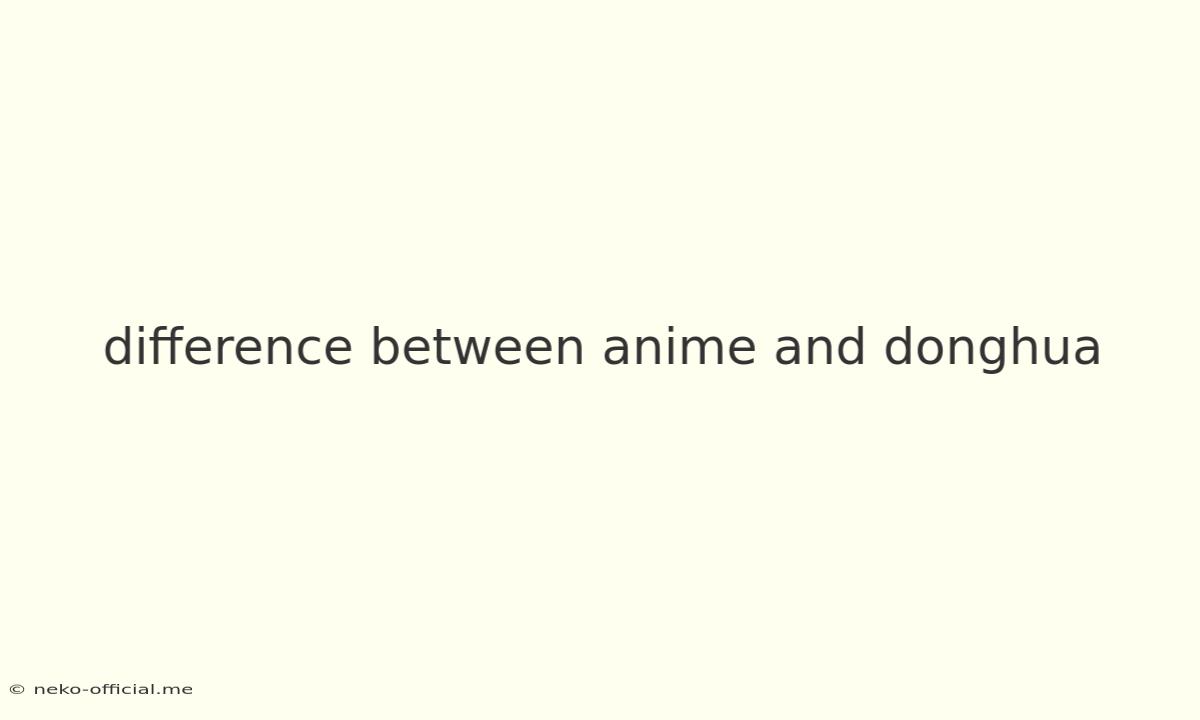Anime vs Donghua: Exploring the Differences Between Japanese and Chinese Animation
The world of animation is vast and diverse, with countless styles and genres to explore. While anime, originating from Japan, has garnered global recognition, a new wave of animation, Donghua from China, is making its mark on the international scene.
Both anime and donghua offer captivating storytelling, stunning visuals, and engaging characters. However, there are distinct differences that set them apart.
Origins and History
- Anime traces its roots back to early 20th century Japan, with Osamu Tezuka widely considered the "father of anime." It evolved into a distinct art form with its own unique style and aesthetic.
- Donghua has a longer history, dating back to the 1920s. However, it gained popularity in the 1960s with the creation of "The Monkey King," which remains an iconic piece of donghua.
Artistic Style and Visuals
- Anime is known for its vibrant colors, distinctive character designs, and dynamic animation. The art style often incorporates exaggerated features and expressive movements.
- Donghua also boasts vibrant colors, but it often leans towards a more realistic and detailed approach to visuals. Character designs can vary greatly, with some adopting a more "anime-esque" style while others embrace a unique, traditional Chinese aesthetic.
Storytelling and Genres
- Anime covers a vast range of genres, from action and adventure to romance and slice of life. Its storytelling often delves into complex themes, exploring social issues, human emotions, and philosophical concepts.
- Donghua is rapidly expanding its genre range, but it still predominantly focuses on fantasy, martial arts, and historical stories. It frequently draws inspiration from Chinese mythology, folklore, and historical events.
Production and Industry
- Anime benefits from a long-established and highly competitive industry in Japan. The production process is well-structured, with experienced studios and animators contributing to its high quality.
- Donghua is experiencing a significant boom in production, with both established studios and independent creators pushing boundaries. The industry is rapidly evolving, investing in technology and talent to enhance quality and production value.
Cultural Influences
- Anime deeply reflects Japanese culture, with elements of mythology, folklore, and social customs interwoven into its stories.
- Donghua prominently features Chinese culture, drawing inspiration from traditional art, literature, philosophy, and history.
Conclusion
Both anime and donghua are powerful mediums of storytelling, each contributing to the rich landscape of animation. While they share similarities, their unique origins, artistic styles, and cultural influences create distinct identities that cater to diverse audiences. As both forms continue to evolve and innovate, their future holds immense potential for captivating the world with their stories and artistic vision.
